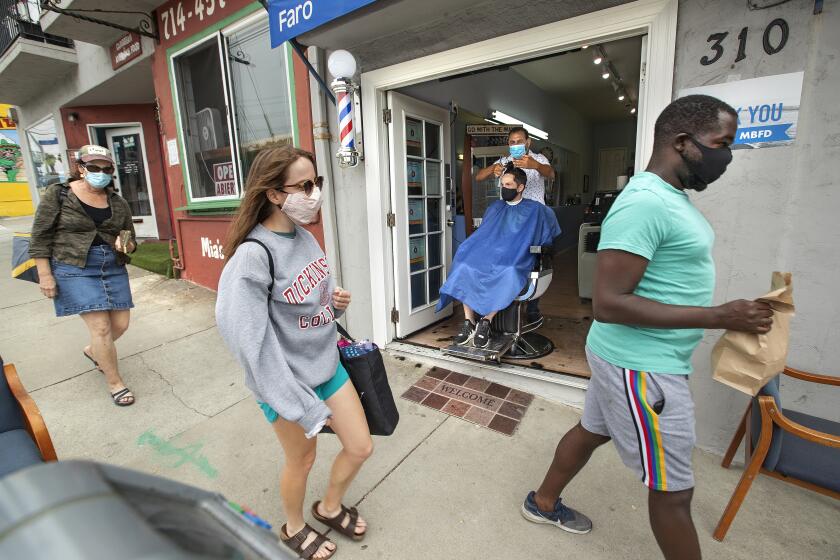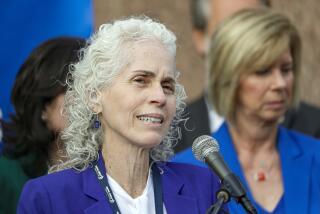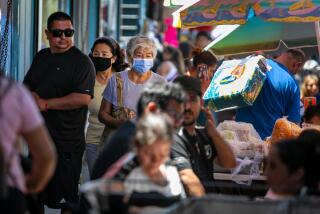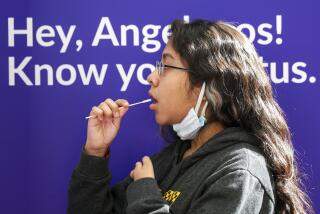Bars are open, but masks are required? Shifting coronavirus rules stir confusion
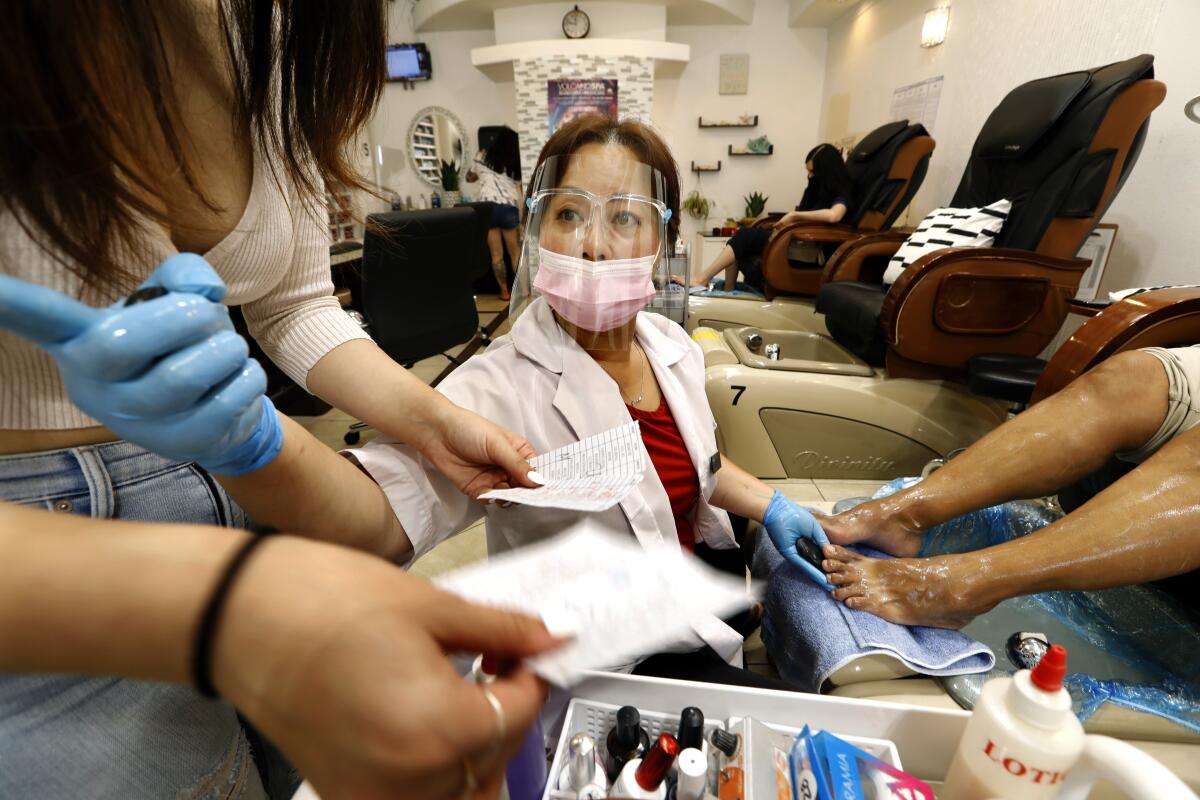
- Share via
After months of warning people to stay home to slow the spread of the deadly coronavirus, California officials have coalesced around a softer approach aimed at allowing the economy to bounce back while also trying to prevent new infections.
It’s a strategy, however, that has often played out in seemingly haphazard and contradictory ways.
On Thursday, California logged more cases of the coronavirus than on any day before and Gov. Gavin Newsom ordered that all Californians wear masks when they leave the house or else jeopardize “the real progress we have made in fighting the disease.”
Later that day, officials in Los Angeles County, the center of the state’s outbreak, announced that bars, nail salons and massage parlors could resume business. Last week, officials announced that increasing transmission of COVID-19 in L.A. County could soon prompt a shortage of intensive care unit beds — and that they would allow gyms and museums to reopen.
Officials say they are carefully balancing the needs of the economy with public health to be able to safely resume normal life, but the recent announcements have left many confused about what is and isn’t dangerous — and whom they can trust.
“None of us are scientists, none of us are doctors, and even the doctors and the scientists are telling us something different every day,” said Joanna Duff, a singer-songwriter who lives in the Hollywood Hills. “You just don’t really know what to believe.”
Medical experts emphasize that nothing about the virus has changed: It is still deadly and circulating in the community. Public health policies driven by economics and politics, though sometimes necessary, can muddle that message and also erode trust in the government, both major problems during a pandemic, experts say.
“I think it’s disingenuous to say they’re trying to do it for health reasons when they’re doing it for the exact opposite,” said Dr. Ernest Rasyidi, a psychiatrist with St. Joseph Hospital-Orange. “Trust is very hard to gain, and it’s very easy to lose.”
What is it like to get a health exam during the COVID-19 pandemic? It is different, but safe and vitally needed, given how many people are avoiding preventative care out of coronavirus fears.
In March, officials ordered widespread shutdowns in part because scientists didn’t fully understand how the coronavirus was spreading, so they were forced to halt as much contact between people as possible. The decisions led to a total disruption of daily life as well as record-high unemployment levels.
The strategy California officials have now adopted is to resume daily life, but with precautions based on what we have learned so far about the coronavirus. While widely supported, the decision is ultimately a compromise between public health and the economy, given that any reopening is expected to lead to more people falling sick and dying.
Officials’ warning sign that reopening has gone too far will not be when case counts begin to tick up, but when they appear to be surging so high they could overwhelm hospitals.
Barbara Ferrer, director of public health for Los Angeles County, said Friday that case counts have remained fairly stable recently, despite large protests and businesses reopening.
“We need to be particularly careful to do everything we can. ... I think if we can do that, we’ll continue to have success with the reopening,” she said. “I hope we never get to the place where we’re closing things down.”
The last few months have shown that people are most likely to become infected in crowded indoor spaces, particularly following prolonged contact with someone who is ill. Wearing masks as well as being outdoors appear to reduce transmission, though it is unclear how much. Outbreaks in the coming months will likely provide more information, experts say.
“We’re still seeing multiple, multiple versions of what we call natural experiments playing out where different places are operating differently,” said San Diego State University epidemiologist Eyal Oren. “We don’t really know the effects of it yet.”
In L.A. County, that approach makes Lorrainy Rosario feel like a lab rat. Since March, she has left her South L.A. apartment only to go on walks because she worries that the virus could put her, as an asthmatic, in serious danger.
But the clothing store where she worked at before the shutdowns is reopening next week, and she is worried it won’t be safe. She doesn’t want to find a new job, but may consider it if she feels the business’ precautions are not sufficient.
“At the end of the day, it is my health. I wouldn’t want to put myself in too much danger,” she said.
Rosario and others point out the inconsistencies they see in the policies. In L.A. County, friends can easily meet up at a store or a restaurant, but officials warn that it would be dangerous for those same people to gather in a home. The guidelines for gyms require that people wear masks when they enter, but they can take them off when they are actually exercising, and breathing most deeply.
Selena Leong, who lives in Hollywood, said her favorite restaurant reopened recently and she feels for the business owners and workers; she lost her own job during the pandemic.
But she doesn’t think it makes sense to go back to the restaurant anytime soon, she said.
“I’ve been reading the stats — you’re much more likely to get it in an enclosed restaurant than sitting outside in someone’s backyard,” she said. “To me, that is a risk not worth taking for sushi just yet.”
The tension is in part driven by a shift into what public health experts call “harm reduction,” an approach that gives people the tools to protect themselves from risky behaviors, instead of trying to stop the behaviors altogether. This is the philosophy behind providing teenagers with condoms and sex education instead of promoting abstinence.
With COVID-19, it means allowing things to open up while also encouraging people to maintain social distancing, hand washing and mask-wearing — all tools to reduce the chance of catching the virus. But the public’s understanding of which tools are truly useful has been somewhat muddled by politics, said Kevin Malotte, a Cal State Long Beach professor emeritus of epidemiology.
He cited officials in Orange County rescinding an order to wear masks amid pressure and many public health experts supporting protests against systemic racism that, though also addressing a major health issue, were not always socially distanced.
Either could embolden people who already didn’t want to take precautions to become more lax, he said.
Trying to get a handle on how California is reopening and what it means for you? Our guide includes updates and tips for remaining healthy and sane.
Further adding to the confusion is the constant stream of news about COVID-19, as well as the influx of scientific papers and research. The public isn’t used to seeing guidance change on a weekly basis, especially when it comes to science, where research typically moves slowly.
“There’s been so much fluctuating guidance and fluctuating statistics ... The science is new, and as a result we’re kind of in the middle of the first draft of the science of COVID,” said Dr. Michael Brodsky, medical director of behavioral health at L.A. Care Health Plan. “I’m a physician and I’m confused myself.”
Osirus Polachart, 22, says the reopenings haven’t changed his behavior. He has sacrificed a lot these past months; the pandemic stripped him of his community college graduation and his summer internship in Washington, D.C.
He saw his friends last week when they drove by for his birthday. He had missed them dearly, but talked to them outside from several feet away.
But he sees that people around him are emboldened by what they have interpreted as a defeat of the virus. One of his friends just took a vacation to Arizona, where coronavirus cases are skyrocketing. His own mother, who is skeptical the virus is a serious threat, is flying to North Carolina to visit family this week.
“I’ve gotten tired of trying to explain it to them,” Polachart said. “Do I feel frustrated that all of this happened? Yes. Do I feel frustrated that a lot of people are doing what they’re not supposed to be doing? Sort of, but it’s out of my control.”
More to Read
Sign up for Essential California
The most important California stories and recommendations in your inbox every morning.
You may occasionally receive promotional content from the Los Angeles Times.

